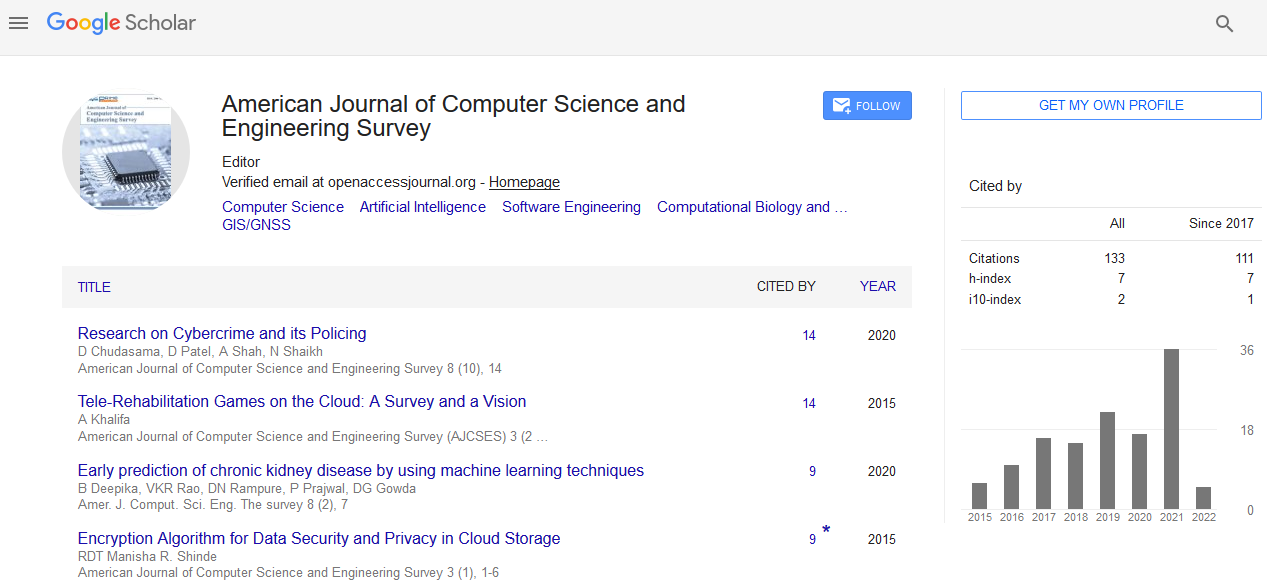Commentary Article - (2022) Volume 10, Issue 2
Clinical Research using Computerized Electronic Databases
Maria K. Sobczyk*
Department of MRC Integrative Epidemiology, University of Bristol, UK
*Correspondence:
Maria K. Sobczyk, Department of MRC Integrative Epidemiology, University of Bristol,
UK,
Email:
Received: 02-Mar-2022, Manuscript No. IPACSES-22-13013;
Editor assigned: 04-Feb-2022, Pre QC No. IPACSES-22-13013(PQ);
Reviewed: 18-Mar-2022, QC No. IPACSES-22-13013;
Revised: 23-Mar-2022, Manuscript No. IPACSES-22-13013(R);
Published:
30-Mar-2022, DOI: 10.36846/2349-7238-10.2.6
Description
Mendelian randomization (MR) utilizes hereditary apparatus
factors to make causal deductions. Despite the fact that it is
some of the time called a “randomized preliminary of nature,”
in light of unmistakable suppositions make correlations between
the consequences of MRI studies and the aftereffects of
randomized controlled preliminaries. Truth Sheets (RCTs) are
priceless. To assess the potential for programmed triangulation
(semi) of MRI and RCT proof, we extricated the ClinicalTrials.
Gov, PubMed and Epigraph DB information bases and played
out a progression of 26 manual record examinations out of 54
MRI distributions and 77 RCTs. We saw that as just 11% of finished
RCTs were recognized in clinical trials. Manual audit of
the writing has featured the chance of triangulation between a
few openness/result matches in the event that these difficulties
can be tended to. We reason that cautious triangulation of MR
with proof from RCTs ought to include thought of closeness of
aggregates in concentrate on plan, intercession force and term,
socioeconomics and status of the populace considered, the
correlation bunch, the objectives of the mediation, and the nature
of the proof. Randomized controlled preliminaries (RCTs)
are thought of as the “best quality level” for assessing the adequacy
of intercessions and practice rules in clinical examination,
with a deeply grounded technique. In RCTs, the choice of
people that are illustrative of the objective populace are arbitrarily
relegated to treatment or control gatherings, permitting
the impact of the mediation to be assessed without huge and
puzzling factors inverse causality in observational investigations.
Throughout the course of recent many years, the causal
deduction approach utilizing regular hereditary variety, known
as Mendelian randomization (MR) - frequently proceeded as
instrumental variable (IV) investigation - has become famous .
This approach is known as “nature’s randomized preliminary”
and depends on parent-youngster randomization of hereditary
varieties that are exemplified in Mendel’s law of autonomous grouping and isolation. At a populace level the randomization
is rough, yet at the same time permits hereditary variations
that are powerfully connected with the deliberate openness to
be utilized to appraise the unprejudiced causal impact of an
openness (by and large acting across life) on wellbeing results,
as long as specific presumptions, examined exhaustively somewhere
else, are met. Altogether, we observed 379,094 individual
examinations were enlisted with a special ClinicalTrials.gov
identifier. We sifted them utilizing various strides to distinguish
RCTs and work with correlation with MR. In our examination;
we recognized 166,954 RCT studies (44% of the aggregate). To
permit semi-automated examination with MR studies, we focussed
on the review subset which presented their measurable
investigation results to the data set. Notwithstanding, we saw
that as just 4% of studies - 13,807 met this model, alongside
remembering foundation data for the preliminary. The majority
of RCTs in the main dataset followed parallel assignment of
participants to treatment, most were designed for treatment,
rather than prevention (n=1,422) and the vast majority of them
had been completed. More trials were observed to be in phase
3 than 4, most trials included both males and females, and a
great majority had 2 arms. The median number of primary outcomes
was 1, with a median of 5 secondary outcomes. Over half
of studies report at least 1 result with p-value less than 0.05.
Comparison with features of all RCTs in the database showed
that our selection was broadly representative, although our
dataset was enriched for completed and late-phase trials.
Acknowledgement
None.
Conflict of Interest
The author declares there is no conflict of interest in publishing
this article.
Citation: Maria KS. (2022) Clinical Research using Computerized Electronic Databases. Am J Comp Science Eng Surv. 10:6.
Copyright: ©Maria KS. This is an open-access article distributed under the terms of the Creative Commons Attribution License, which permits unrestricted use, distribution, and reproduction in any medium, provided the original author and source are credited.

